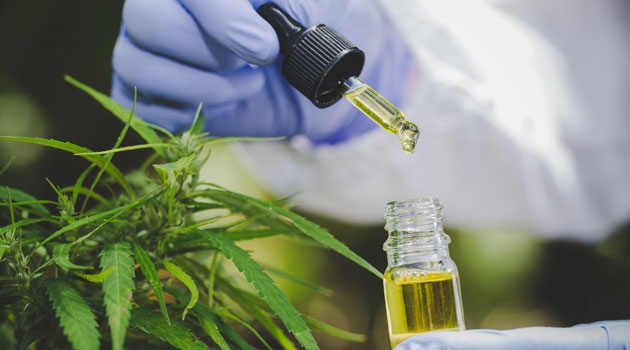We need to do more research on cannabis
Column

American research on cannabis led to the development of a large number of synthetic substances. Hardly any of these meet the requirements of a safe medicine. Continued clinical studies are needed. Photo: Getty Images
COLUMN. Though studies of the medical effects of cannabis are growing in scope, we still lack essential knowledge. Therefore, all discussions about legalisation and decriminalisation must be preceded by genuine and extensive research, states Fred Nyberg, Professor Emeritus at Uppsala University.
In an interview in SVT Vetenskapens Värld, I was asked why cannabis research has not advanced further, despite the knowledge that this drug can be used for medical purposes. And yes, it is true that cannabis, like other products from the world of plants, has been used through the ages to provide relief from various symptoms of disease. On the other hand, cannabis is also well known for its intoxicating and addictive effects, and Swedish research on cannabis has mainly focused on addiction, dependence and negative effects on health, rather than its presumptive medical effects.
There are several relevant answers to why insufficient resources have been allocated to research on the medical potential of cannabis. One central aspect is the drug's association with abuse and crime.
In the 1960s, the use of cannabis appeared among mods and hippies. In Sweden, cannabis use peaked in 1971–72, influenced by youth movements in the United States and the rest of the western world. The increase led to police efforts and tougher penalties for sales. Among politicians, increased concern became evident, among other reasons because research confirmed risks to mental health. Cannabis smoking was included when all use of narcotics was criminalised in 1988.
Cannabis contains almost 500 different substances, almost 80 of which are psychoactive. Despite the known medical effects of cannabis – notably through the active ingredients tetra-hydrocannabinol (THC) and cannabidiol (CBD) – research in the 1990s focused mainly on the epidemiological, sociological and psychological aspects of cannabis abuse. It was only after the discovery of the body-specific (endogenous) cannabinoid system that interest in research on the medical potential of cannabis increased, especially in the US, but not in Sweden.
Continued concern among politicians and authorities provided little motivation for Swedish researchers to initiate medical studies in the area. Internationally however, especially in the US, research began on the medical effects of cannabis. In the late1990s, new discoveries led to a more detailed description of the body-specific cannabinoid system. In the western world, intensive research was then initiated, aiming to produce synthetic substances for the development of drug candidates for a number of neurological disease states.
American research on cannabis led to the development of a large number of synthetic substances that act similarly to THC. Unfortunately, like unprocessed cannabis, hardly any of these meet the requirements of a safe medicine set by Sweden, the US and most other countries. Continued clinical studies of cannabis are therefore needed, but nevertheless, the use of legal marijuana for both recreational and medical use continues. This worries US health experts and researchers, but not the politicians who have promoted the legalisation that is now a fact in half of the country's states.
A partially successful result was obtained in an attempt to produce a pure CBD preparation: the THC-free Epidiolex®, which has been approved by US and EU authorities for severe epilepsy among children. However, the preparation is associated with side effects, and has not yet undergone complete clinical trials meeting Swedish requirements. To do this will require more studies, motivated researchers and sufficient funding.
There are also several answers to the question as to why Sweden has a different approach to cannabis than the US and Germany. Sweden is strict about medicines being as safe as possible and ensuring that advertisements for drugs or medical health products are factual, which is not always the case with some US companies. Sweden also has a tradition of social responsibility, not merely targeting harm reduction efforts at the addict, but also providing support to children and relatives, including prevention, minimising accessibility to drugs and aiming to ensure that children are not in environments where abuse is present.
In terms of providing drug addicts with optimal help, neither the United States nor Germany differ from Sweden. What distinguishes Sweden from these countries is that the US largely looks to economic benefits through tax revenues and increased job opportunities for those involved in the production and sale of cannabis. There is also a perception that legalisation counteracts crime, and that drug users should be converted. However, if anything, the illegal trade has gained an increased customer base, which is likely linked to the fact that it can sell more attractive products with a higher THC content.
The documentary film shown by SVT Vetenskapens Värld visualises the two sides of the use of narcotics: the medical effects and the risk of harm. Of course, this also applies to cannabis. Undoubtedly, we need more knowledge. Therefore, all discussions of legalisation and decriminalisation must be preceded by genuine and extensive research.
Fred Nyberg, Professor Emeritus at the Department of Pharmaceutical Biosciences, Uppsala University
